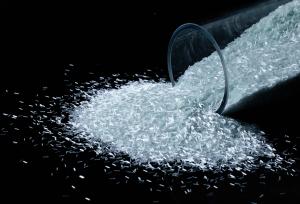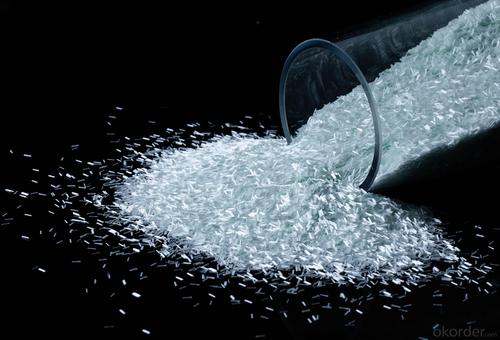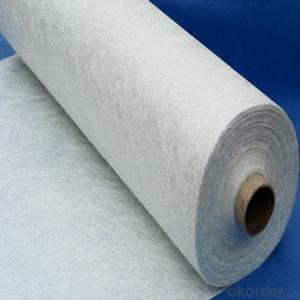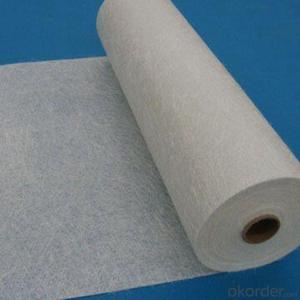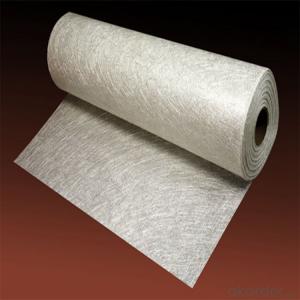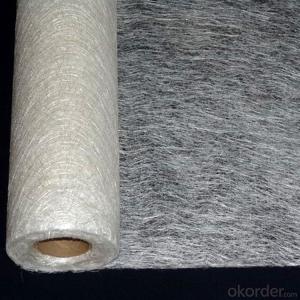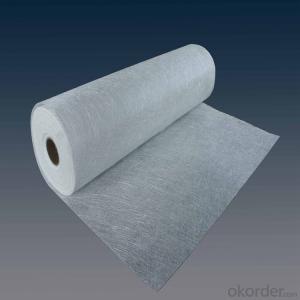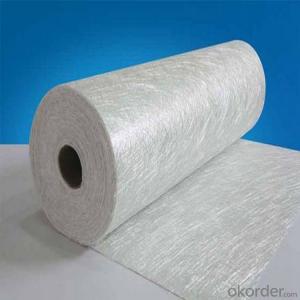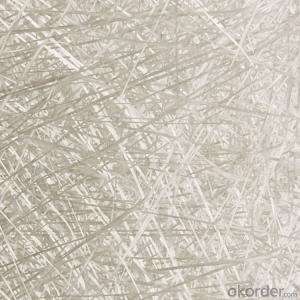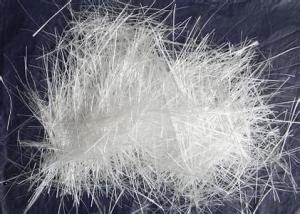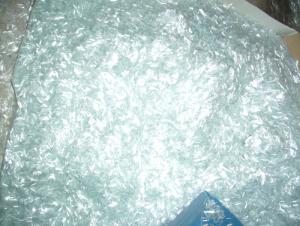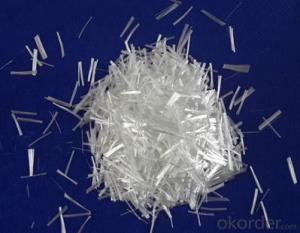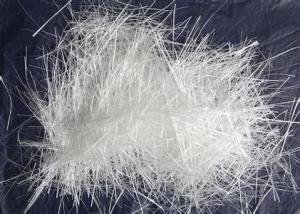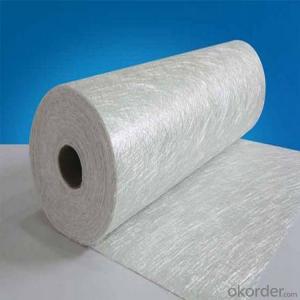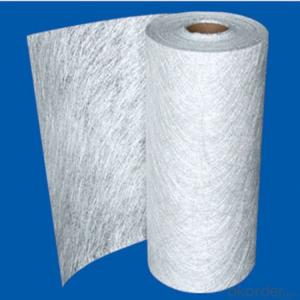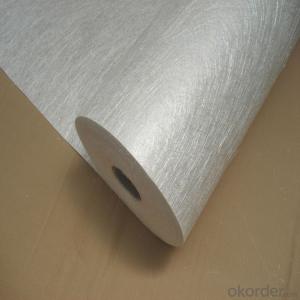558 E Glass Fiber Chopped Strands For BMC
- Loading Port:
- Shanghai
- Payment Terms:
- TT or LC
- Min Order Qty:
- 1000 kg
- Supply Capability:
- 1000000 kg/month
OKorder Service Pledge
OKorder Financial Service
You Might Also Like
558 Chopped Strands
558 Chopped Strands are specifically designed to reinforce phenolic resin. They are coated with a silane-based sizing and have excellent dry flowability and strand dispersion. 558 are designed for use in the compression molding process to manufacture automobile brake shoe facings, clutch facings, and friction plates.
Product Features:
·Good strand integrity and low static
·Low fuzz and good flowability
·Fast and uniform distribution in resins and good processing properties
·Good mechanical properties
Technical Parameters:
Item | Filament diameter variation | Moisture content | Sizing content | Chopped length variation | Choppability |
Unit | % | % | % | mm | % |
Test menthod | ISO 1888 | ISO 3344 | ISO 1887 | Q/JS J0361 | Q/JS J0362 |
Standard range | ± 10 | ≤ 0.07 | 0.85 ± 0.15 | ± 1.00 | ≥ 99.00 |
Typical chopped length (mm):3mm,4.5mm,6mm,12mm
Instructions:
·The product is best used within 12 months after production, and should be kept in the original package before use.
·Care should be taken when using the product to prevent it from being scratched or damaged.
·The temperature and humidity of the product should be conditioned to be close or equal to the ambient temperature and humidity before use, and the ambient temperature and humidity should be properly controlled during the use.
Packaging:
The product can be packed in container bags or woven bags:
- A container bag can hold 900kg~1200kg of products, with the standard weight being 1000kg.
- A woven bag can hold 15kg~30kg of products, with the standard weight being 25kg.
Container bag size:
Length mm(in):990 (38.98)
Width mm(in) :990 (38.98)
Height mm(in) :1100 (43.31)
Woven bag size:
Length mm(in):850 (33.46)
Width mm(in) :500 (19.69)
Height mm(in) :120 (4.72)
Storage:
Unless otherwise specified, the fiberglass products should be stored in a dry,cool and moisture-proof area.The best temperature and humidity should be maintained at -10℃~35℃ and ≤80% respectively. To ensure safety and avoid damage to the product, the pallets should be stacked not more than three layers high. When the pallets are stacked in two or three layers, special care should be taken to correctly and smoothly move the upper pallet
- Q: Can fiberglass chopped strand be used in water storage tanks?
- Yes, fiberglass chopped strand can be used in water storage tanks. Fiberglass is a strong and durable material that is resistant to corrosion and can withstand harsh environmental conditions. It is commonly used in the construction of water storage tanks due to its excellent properties, including high tensile strength, low weight, and resistance to chemicals and UV radiation. The chopped strand form of fiberglass is often used in the manufacturing process of fiberglass-reinforced plastics (FRPs) which are widely used in water storage tanks. The chopped strands are usually mixed with a resin matrix to create a composite material, providing added strength and structural integrity to the tank. Additionally, fiberglass is non-porous, making it an ideal material for preventing water leakage and contamination. Overall, fiberglass chopped strand is a suitable and commonly used material in the construction of water storage tanks.
- Q: Is fiberglass chopped strand suitable for sports equipment manufacturing?
- Fiberglass chopped strand is indeed suitable for the manufacturing of sports equipment. This material, known for its lightweight, durability, and strength, is widely used in the production of various sports equipment such as boats, kayaks, surfboards, hockey sticks, and helmets. The chopped strand form of fiberglass is composed of small glass fibers that are arranged randomly and can be effortlessly combined with resin to form a composite material. This characteristic allows for flexibility and customization during the manufacturing process, as the chopped strand can be easily molded and shaped to meet the specific requirements and designs of different sports equipment. Moreover, fiberglass boasts exceptional tensile strength, impact resistance, and dimensional stability, making it the ideal choice for sports equipment that must endure rigorous use and potential impacts.
- Q: Does the manufacturing process of fiberglass chopped strand involve any hazardous chemicals?
- Indeed, hazardous chemicals are utilized in the manufacturing process of fiberglass chopped strand. The procedure entails the melting of glass, which is subsequently extruded through exceedingly small apertures to form delicate fibers. Throughout this course, substances including boron, lead, arsenic, and formaldehyde might be employed. These particular chemicals possess potential risks to the well-being of laborers if appropriate safety precautions are disregarded. Hence, it is imperative for manufacturers to adhere to occupational health and safety regulations in order to safeguard both workers and the surroundings.
- Q: Can fiberglass chopped strand be used in electrical cables?
- No, fiberglass chopped strand is not typically used in electrical cables. It is more commonly used in applications such as reinforcements for plastics, composites, and construction materials.
- Q: What are the typical surface preparation techniques for fiberglass chopped strand composites?
- Surface preparation techniques for fiberglass chopped strand composites typically involve a series of steps to ensure proper bonding and adhesion of the composite material. To begin with, the surface of the composite needs to be cleaned in order to eliminate any dirt, dust, oils, or contaminants that may be present. This can be achieved by employing solvents or detergents, followed by a thorough rinsing and drying of the surface. Once the cleaning process is completed, the next step involves roughening or abrasion of the surface. This is typically accomplished by using sandpaper, abrasive pads, or a sanding machine. The purpose of this step is to create a rough surface profile that enhances the mechanical interlocking between the composite material and the substrate. Following the roughening process, it is crucial to eliminate any dust or debris that may have been generated. This can be achieved by either blowing compressed air or using a vacuum to clean the surface. After the surface has been roughened and cleaned, the subsequent step entails applying a suitable primer or surface treatment. The choice of primer or treatment depends on the specific requirements and compatibility with the composite material. Primers assist in enhancing adhesion and creating a barrier against moisture or other environmental factors. They can be applied using brushes, rollers, or spray equipment. Once the primer or treatment has been applied, it must be allowed to dry or cure according to the manufacturer's instructions. This ensures that the surface is ready for the final step, which involves the application of the chopped strand composite. It is important to note that the specific surface preparation techniques may vary depending on the type of fiberglass chopped strand composite and its intended application. Manufacturers or suppliers of the composite material usually provide detailed instructions and guidelines for surface preparation, which should be followed for optimal results.
- Q: How does the stiffness of the chopped strand affect its performance?
- The stiffness of a chopped strand plays a crucial role in determining its performance. The stiffness of a fiber refers to its resistance to bending or flexing when subjected to external forces. A higher stiffness in chopped strands typically leads to improved mechanical properties in the final product. When incorporated into a composite material, a stiff chopped strand can enhance the strength, rigidity, and dimensional stability of the composite. This is especially important in applications that require high structural integrity, such as automotive parts, aerospace components, or sports equipment. The stiffness of chopped strands also affects their ability to transfer and distribute stress within the composite matrix. A stiffer fiber can efficiently transfer loads and distribute them evenly across the composite, preventing localized stress concentrations that could lead to material failure. This is particularly crucial in dynamic or high-stress environments, where the chopped strand needs to withstand constant or repetitive loading. Moreover, the stiffness of the chopped strand influences its interfacial bonding with the matrix material. A stiffer fiber can provide better mechanical interlocking and adhesion with the matrix, resulting in improved load transfer between the two components. This enhanced interfacial bonding helps to maximize the overall mechanical performance of the composite material. However, it is important to note that the optimal stiffness of a chopped strand depends on the specific application and the desired performance characteristics of the final product. While a high stiffness is generally beneficial, there might be cases where a lower stiffness is preferred to achieve specific properties such as flexibility or impact resistance. In summary, the stiffness of a chopped strand significantly impacts its performance. A higher stiffness generally leads to improved mechanical properties, enhanced load transfer, and better interfacial bonding. However, the optimal stiffness should be carefully chosen based on the specific requirements of the application to achieve the desired performance characteristics.
- Q: How is fiberglass chopped strand used in the sports and leisure industry?
- Due to its exceptional mechanical properties and versatility, fiberglass chopped strand finds extensive use in the sports and leisure industry for a variety of purposes. One primary application of fiberglass chopped strand in this sector involves its incorporation into composite materials used for manufacturing sporting equipment and accessories. When producing items like tennis rackets, hockey sticks, golf clubs, and bicycle frames, fiberglass chopped strand is combined with resin to create composite materials. These composites impart exceptional strength, stiffness, and impact resistance to the final products. Additionally, fiberglass composites offer improved durability and lightweight attributes, both of which are essential for optimizing the performance of sports equipment. Moreover, fiberglass chopped strand is also integral to the production of water sports equipment such as surfboards, paddleboards, and kayaks. The exceptional strength-to-weight ratio of fiberglass composites makes them highly suitable for these applications, as they provide the necessary buoyancy, stability, and durability to withstand different water conditions. In the leisure industry, fiberglass chopped strand finds use in the construction of recreational vehicles, caravans, and camper trailers. The utilization of fiberglass composites in these vehicles offers several notable advantages, including corrosion resistance, enhanced fuel efficiency, reduced weight, and improved structural integrity. Consequently, this contributes to a more enjoyable and safer leisure experience for users. Furthermore, fiberglass chopped strand is employed in the production of recreational and amusement park rides. The lightweight and robust nature of fiberglass composites make them ideal for fabricating intricate and complex ride structures, ensuring the safety and excitement of riders. In summary, fiberglass chopped strand plays a pivotal role in the sports and leisure industry by providing manufacturers with a versatile material that can be tailored to meet specific performance requirements. Its incorporation into the production of sporting equipment, water sports gear, recreational vehicles, and amusement park rides showcases the wide array of applications and benefits that fiberglass chopped strand offers in this sector.
- Q: How does the thermal conductivity of the chopped strand affect its performance?
- The performance of the chopped strand is significantly influenced by its thermal conductivity. Thermal conductivity is a property that measures the heat conduction ability of a material. In the case of chopped strands, typically made from materials like fiberglass or carbon fiber, the efficiency of heat transfer depends on their thermal conductivity. A higher thermal conductivity allows the chopped strand to effectively conduct heat away from the source, resulting in superior heat dissipation. This is crucial in industries like automotive and aerospace, where efficient heat management is essential. Conversely, a lower thermal conductivity can insulate the heat source, preventing its spread to other areas. This can be advantageous in scenarios where heat containment or localization is necessary, such as in electronic devices or thermal insulation. To summarize, the thermal conductivity of the chopped strand directly impacts its performance by influencing its ability to dissipate or retain heat. The specific requirements of each application will determine whether a higher or lower thermal conductivity is more desirable.
- Q: What does the fiberglass operated tool body do?
- Spray roving for FRP spray roving should have the following properties: cutting and molding good, in electrostatic continuous high speed cutting less; the inefficiency of roving after cutting dispersed into raw silk to be high, namely splitting rate high, usually above 90%; the short cut of raw silk has excellent mould covering, covering every corner of the mold; the resin soak fast, easy to be flat and easy to drive roller of roller and raw silk tube bubble; degradation performance, yarn density uniform, suitable for all kinds of spray gun and fiber transmission system. The roving used for injection is made of strands of raw silk, and each strand contains 200 glass fiber filaments.
- Q: How does the fiber-matrix adhesion of fiberglass chopped strand affect the performance of composites?
- The fiber-matrix adhesion of fiberglass chopped strand significantly influences the performance of composites. A strong adhesion ensures efficient stress transfer between the fibers and the matrix, leading to improved mechanical properties such as strength, stiffness, and impact resistance. It also helps in preventing fiber pullout or debonding, enhancing the overall durability and reliability of the composite material. In contrast, weak adhesion can result in reduced mechanical strength and compromised performance, limiting the potential applications of the composites.
Send your message to us
558 E Glass Fiber Chopped Strands For BMC
- Loading Port:
- Shanghai
- Payment Terms:
- TT or LC
- Min Order Qty:
- 1000 kg
- Supply Capability:
- 1000000 kg/month
OKorder Service Pledge
OKorder Financial Service
Similar products
Hot products
Hot Searches
Related keywords
